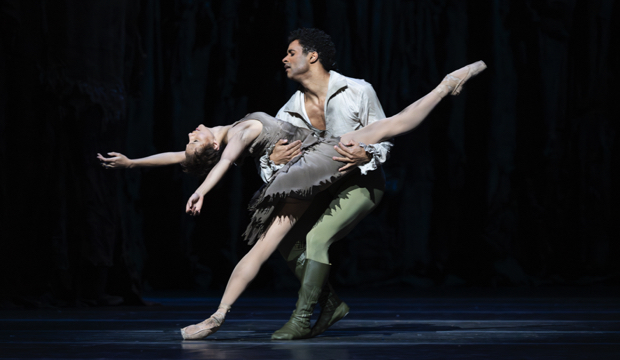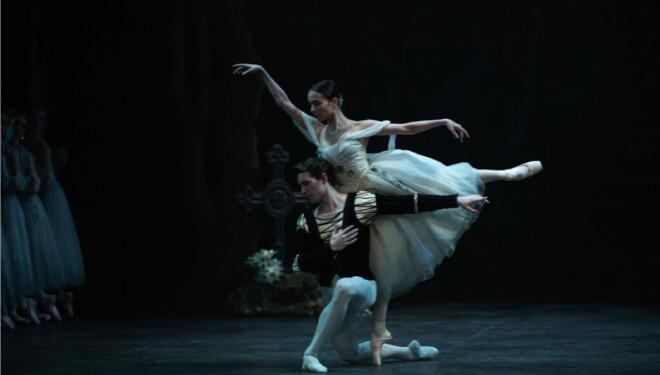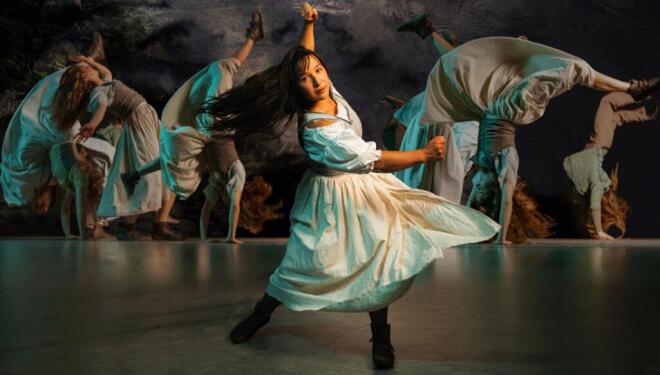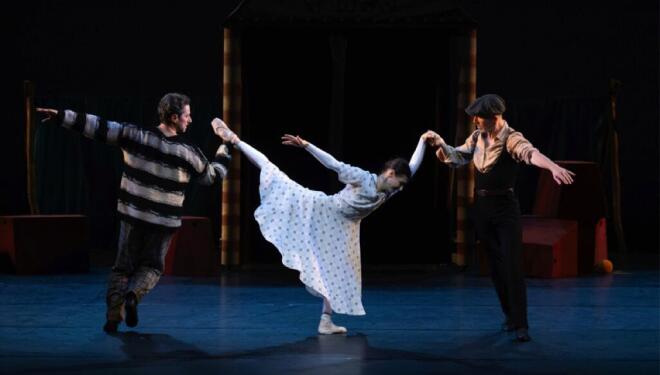
Based on a novel by Abbé Prévost, which excoriates the corruption of mid-18th-century France, MacMillan and his designer Nicholas Georgiadis graphically depict the glaring contrasts between the ostentatious riches and abject poverty existing cheek by jowl in Paris.
At its heart is a love story: the country girl Manon arrives in Paris on her way to a convent, but falls in love and elopes with the penniless student Des Grieux. However, the prospect of a life of luxury as the mistress of the rich Monsieur GM entices Manon to leave her lover and set off for the demi-monde of Paris.
An attempt to swindle her rich protector and run away with Des Grieux backfires; followed by her faithful lover, Manon is deported to Louisiana where she dies of fever in the arms of the grief-stricken Des Grieux.
Manon is shallow and grasping. Brought up in rural poverty she is quick to realise the possibilities of Paris. Love is fine; but riches and a sort of social position as the mistress of a very rich man even better.

Francesca Hayward (Manon) in Manon ©2023 Foteini Christofilopoulou
As a character she is difficult to love; yet her punishment in the harrowing Act III is so out of proportion to her crime that you can’t help feeling for her. And you feel, too, for the faithful Des Grieux, his life ruined by love.
MacMillan’s ballet portrays the social milieu with a series of busy ensemble numbers: in the bustling city square where Manon meets Des Grieux, a party at the hôtel particulier of Act II where Manon attempts her fateful swindle of Monsieur GM, and the atmospheric Louisiana swamps of Act III.
But the ballet is anchored on four pas de deux for Manon and Des Grieux: their first encounter in the square when a still innocent Manon falls in love with Des Grieux; a passionate post-coital duet in his bedroom; the third after they’ve fled Monsieur GM, Manon no longer a girl, but rather a capricious woman of the world; and the final pas de deux in the swamp where her total helplessness and Des Grieux’s anguish are heart-rending.

Francesca Hayward (Manon), Marcelino Sambé (Des Grieux) in Manon. ©2023 Foteini Christofilopoulou
On opening night Francesca Hayward conveyed the gradations of Manon’s character with assured dancing, though the famed bedroom pas de deux could have done with a little more raw sensuality. Marcelino Sambé had tremendous presence as a deeply expressive lover, handling MacMillan’s choreography with elegance, his safe partnering particularly skilful in the final frenzied pas de deux.
Among the supporting cast Gary Avis again risked stealing the show with his reptilian foot-fetishist Monsieur GM, the kind of total performance you can’t take your eyes of, repulsive as the character is.
Alexander Campbell was a competent Lescaut, Manon’s dissolute brother, who sells her to the highest bidder; though his Act II drunk scene fell a little flat. Mayara Magri was excellent as Lescaut’s long-suffering mistress.
The Orchestra of the Royal Opera House conducted by Koen Kessels excelled in its playing of Massenet’s glorious score.
Age Guidance: 14+
Manon, starring Natalia Osipova and Reece Clarke, will be relayed live to cinemas nationwide on Wed, 7 February at 19:30; with Encore on Sun, 11 February at 14:00. To find a participating cinema near you click here
| What | The Royal Ballet, Manon Review |
| Where | Royal Opera House, Bow Street, Covent Garden, London, WC2E 9DD | MAP |
| Nearest tube | Covent Garden (underground) |
| When |
17 Jan 24 – 08 Mar 24, 19:30, Sat 3 & 17 Feb and 2 Mar at 13:00 & 19:00 Dur.: 2 hours and 45 mins inc two intervals |
| Price | £8-£140 |
| Website | Click here to book |



